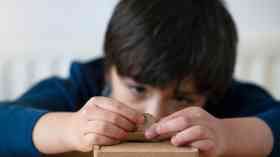In November 2020 I was told I had 6 months left to live and was at risk of sudden death, due to a colloid cyst in my brain.
Supplier Focus
Latest Supplier News
Borg & Overström is a UK manufacturer of premium drinking water solutions. For over 20 years Borg & Overström has developed sustainable, bottle-less, hygienic, drinking water dispensers with the aim to provide exceptional, safe, self-service drinking water into schools, universities, workplaces and communal spaces.

 The close contact nature of the classroom and children’s often poor hygiene can result in bacterial infections quickly spreading from child to child. This is why school classrooms make the ideal environment for germs to thrive.
The close contact nature of the classroom and children’s often poor hygiene can result in bacterial infections quickly spreading from child to child. This is why school classrooms make the ideal environment for germs to thrive. 








